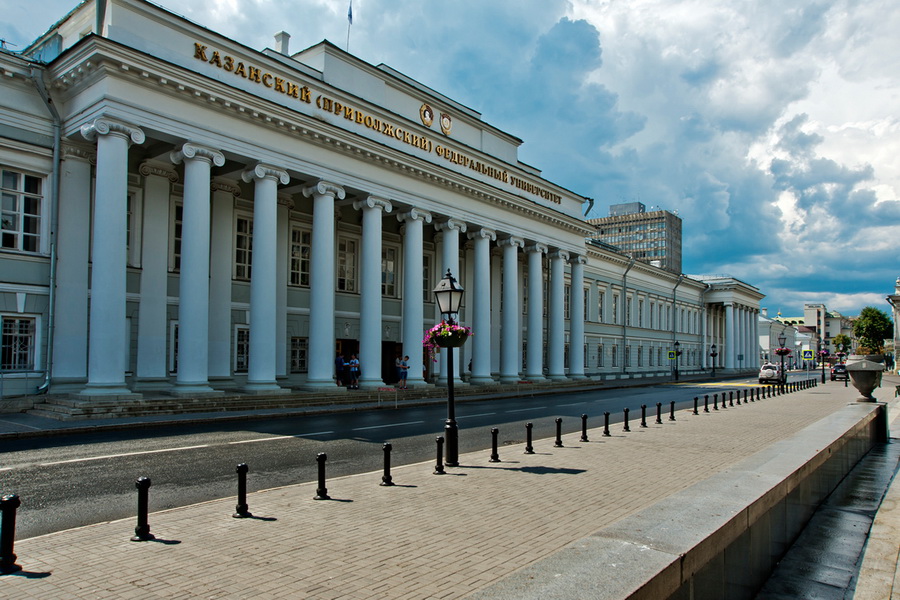Kazan Federal University

As the oldest educational institute in all of Russia, Kazan Federal University is one of the main attractions in the capital of Tatarstan. Officially recognized as a valuable national monument of Russia, its classical-style building proudly occupies an entire block along Kremlevskaya Street.
Kazan Federal University was founded in 1804 by Emperor Alexander I, with classes commencing the following year. At that time, the educational institution was located in the building of the Kazan Imperial Gymnasium, and it was only after it acquired three neighboring houses a few years later that the university campus was born.
The main building of the current campus was constructed in the early 19th century. Its classical three-portico exterior, which can still be seen by visitors to Kazan today, later became the dominant building on the southern edge of campus. Other buildings continued to be added to Kazan University throughout the 20th century, with the latest addition completed on the east wing in 2003, just before the institute’s bicentennial anniversary.
Several renowned scientists studied within the walls of Kazan University, including chemist Karl Klaus, physiologist Nikolay Kovalevsky and Nikolay Lobachevsky, creator of non-Euclidean geometry. Internationally-acclaimed discoveries, most notably organic chemistry, also had their origins in the science department of Kazan University.
The university experienced a period of rapid development under Lobachevsky, who presided as its head for two decades. During his presidency, the level of education and number of courses at Kazan Federal University rose, scientific activity rapidly developed and new faculties, libraries, a botanical garden, printing house and a medical institute were all opened.
The university continued to advance in the Soviet period, and during World War II, some departments of the Academy of Sciences of St. Petersburg and Moscow were even transferred here.
Today, Kazan University is one of eight federal universities in Russia. It consists of more than 16 faculties and various institutes, with branches in several other Russian cities. Additionally, there are several vocal and dance groups, a folk choir and a chapel which opened in 1955. About fifty thousand students from around the world are proud to hold the title of student at the high-ranking Kazan Federal University.
The rich past of Kazan Federal University and its diverse achievements are now on display in several museums and exhibition halls which opened in 2016.

